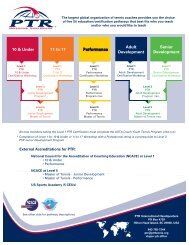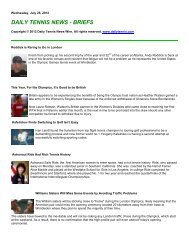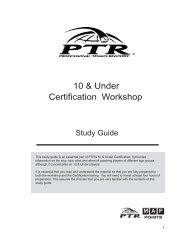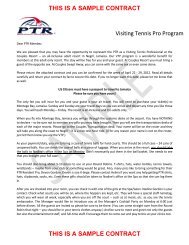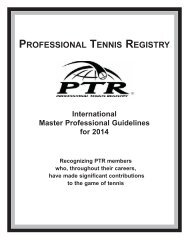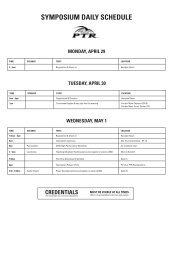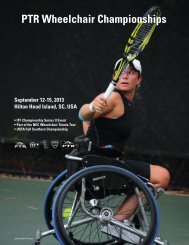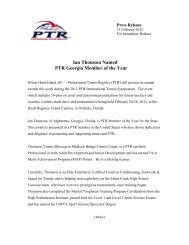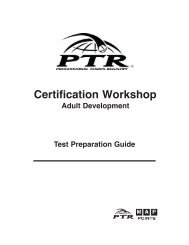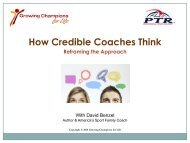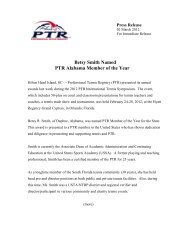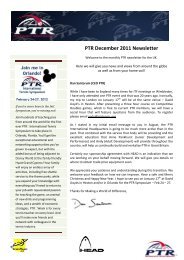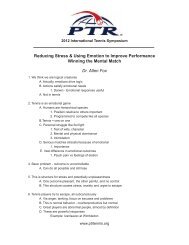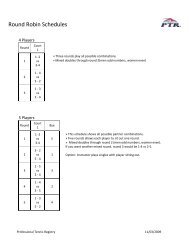SPORT SCIENCE - Professional Tennis Registry
SPORT SCIENCE - Professional Tennis Registry
SPORT SCIENCE - Professional Tennis Registry
You also want an ePaper? Increase the reach of your titles
YUMPU automatically turns print PDFs into web optimized ePapers that Google loves.
During a tournament, from match to match, considerable energy may be expended. Bloodglucose and glycogen in muscles need to be replenished. In addition, due to soreness anddamage or micro-tears, muscles require repairing. To help repair muscles and replenishenergy, carbohydrates and some protein should be consumed. If done within 45 minutes afterprolonged exercise (e.g., a three set tennis match), muscle repair and glycogen storage in themuscles can be significantly improved at a faster rate. As discussed earlier, high glycemicfoods are digested and processed by the body faster than other foods. Many food productsusing potatoes, corn and white rice have high glycemic indices. Many competitive andprofessional tennis players use low fat chocolate milk (or other drinks with a similarcomposition) as a recovery drink. Studies indicate that low fat chocolate milk has goodconcentration of carbohydrates (both low and high GI) and protein.The USTA produced a couple recent documents on recovery in tennis that are available online.The Recovery Project has a comprehensive review of studies and practices. Coaches,parents and trainers will find this resource valuable. The Recovery Booklet is more practicalfor players and coaches. The two resources can be found athttp://www.usta.com/tennisrecovery/The following are 10 suggested practices for recovery.1. Athletes should listen to their bodies. Ask your players how they feel after matches,and suggest ways to assist recovery and eliminate or modify the practices if matchesor training was particularly hard. Players may keep a journal or log to record theiractivities, nutrition, sleep and emotional states and feelings. Encourage all players totake 1 to 2 days off per week.2. Have an off season. Some juniors love competition and try to play year-round, whichcan hurt their progress, keep them fatigued, and accelerate burnout. Help plan theirtournament and training schedule.3. Be aware of player injuries and where the player stands in rehabilitation. Check whatis allowed or not. If there is an athletic trainer/physical therapist, find out directly,since sometimes athletes might miss information or want to practice despite thetrainer’s advice.4. Vary your drills or training sessions. Keep athletes fresh by adding a fun routine or aroutine that trains the body differently. At times, ask players what they’d like to do forgames.PTR Practical On Court Applications for Sport Science 32



